Characteristics of modern wall door stops
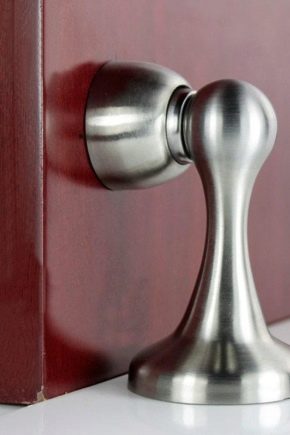
Modern wall stops for doors are a necessary accessory that allows you to preserve the appearance of walls and doors of offices, shops, offices, apartments and other premises. The stopper (an alternative name for the stopper) is an easy solution to the problem of over-opening the doors. Particularly relevant is the issue of preserving walls and handles in places where doors are constantly in operation, when a large number of people enter and leave the room. At the same time, the low price distinguishes the product favorably from door closers.


Limiter classification
Modern manufacturers produce a fairly large assortment of door stops, in the variety of which we will try to figure it out now.
There are several types of restraints.
- Stops - the main purpose is to limit the swing angle of the door, as well as to fix it in the desired position. Stops are floor and wall; with magnetic, rubber or plastic pads; metal, completely plastic; multi-colored.
- Stoppers - designed to fix the door in a certain position, for example, when it is required to open it slightly. If you remove the stopper, then it opens to a much larger angle. The most common stopper is the door chain.
- There are overlays. They prevent the door from closing completely, leaving a small gap. Available in a wide variety.
- Door closers - complex mechanisms that allow you to smoothly close the doors on their own - entrance, in offices, in offices.
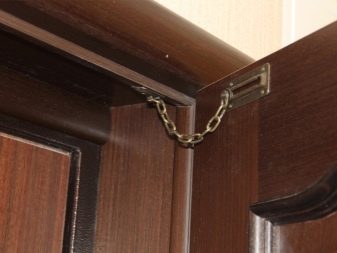
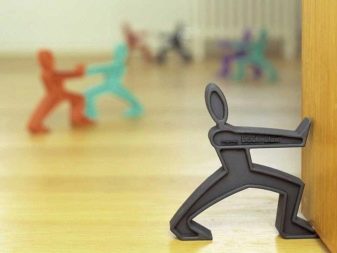
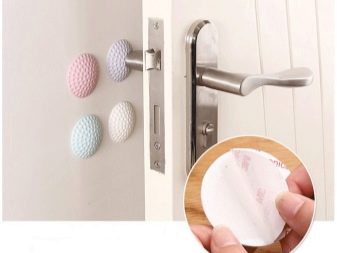
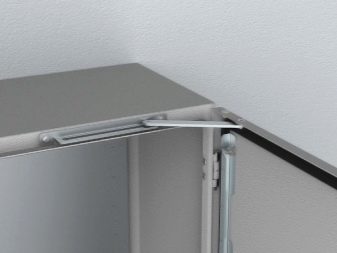
Closers are much more expensive than stops, it is necessary to constantly monitor their technical condition, carry out maintenance, they require time and material costs.
Wall restraints
One of the most common stops is the wall stopper. It is a fairly simple device. Stops differ from each other in the way of fastening. There are self-adhesive stops (most often found), fastened with self-tapping screws.
Wall restraints can be round, oval and square. They are most often made of metal and plastic. They have pads made of rubber, silicone, plastic and are equipped with a magnet.
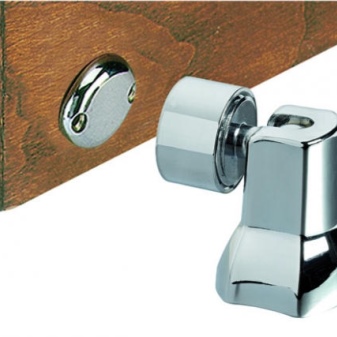
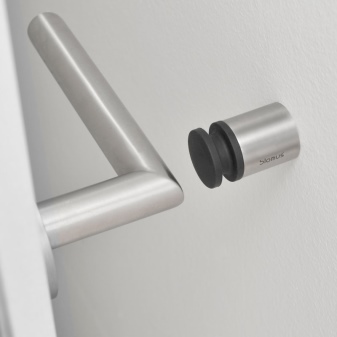
The restraints can be mounted on the wall at the top of the door as well as at the bottom. You can choose the size, color, type for a particular room, taking into account the furniture.
The stop with a magnetic strip also has a metal strip that is attached to the door. This product is necessary in cases where fixation in the open position is required.
Features of installing wall restraints
Self-adhesive wall restraints are easy to install. The manufacturer applies a layer of special glue to the product in advance. It is enough to choose a place, remove the protective sticker and attach it to the wall. As a rule, you need to hold it in this position for a minute, the stop is ready for use if the damping pad is not magnetic. Otherwise, it is necessary to fix the metal plate on the door itself, at the same level as the stop, for the subsequent fixation of the door in the open position. However, in the case of using a self-adhesive stopper, special requirements are imposed on the surface of the wall. It should be flat, without pasting.
Painted, glass walls, plastic partitions are best suited.

Stops with self-tapping screws require the preparation of the wall, it is necessary to drill holes in it in advance. A tool is required - a drill, screwdriver, ruler and some others.
The material from which the walls are made should be evaluated. Brick, concrete, from SKTs blocks and other durable materials, the walls do not require additional reinforcement of the installation site. If they are sheathed with plasterboard, plastic panels, with materials that have voids, then the place for attaching the stop must be additionally equipped, since when the door is opened, kinetic energy arises, which can damage the wall made of these materials. Accordingly, one of the main tasks assigned to wall restraints will not be fulfilled - preserving the integrity of walls and doors.
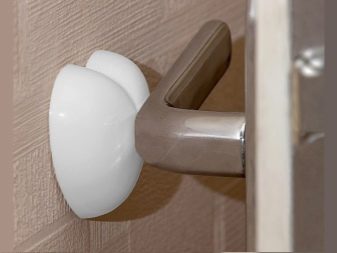
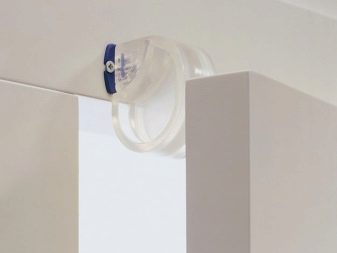
As a "reinforcement" of the wall, you can use a metal plate, which is placed under the stop. At the same time, it should be approximately 4 times larger in adjoining area to the wall than the wall stopper.
We have considered only the main features of wall stops for doors and how to fix them. These products are widespread and easy to self-assemble.
How easy it is to mount a magnetic door stop, see the video below.













The comment was sent successfully.